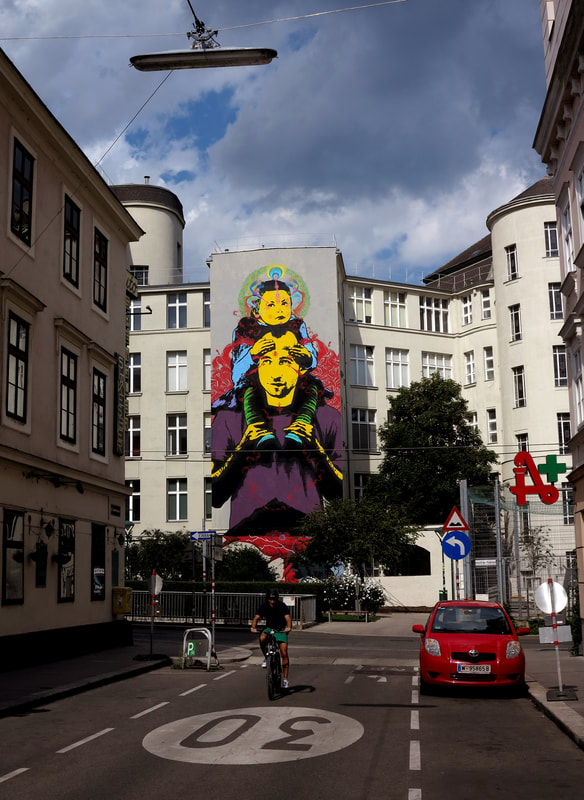An interview by reporter Susanna Allende with Mexican urban artist STINKFISHSUSANNA ALLENDE | ARTICULATE #15 | APRIL 2018
Susana Allende is having a chat with Mexican urban artist Stinkfish.
Tell us a little bit about yourself I was born in México City, but I moved to Bogotá with my family at the age of 4. I’ve been living there ever since. My main work is graffiti in different ways of action, also I work on editorial projects under my label HOGAR edition. I am part of APC (Animal Power Crew) When and how did you get interested in art?
My parents had always books and magazines about art, photography and design at home. I started to check this material since a really young age. Where or how did you get your training? In the street, with my friends. How would you define your art? My work is a mix of graffiti and photography, vandalism and social ethnology. Where do you get your inspiration from? From the streets, the common people, my friends and family. Why did you choose the street to express yourself?
The streets were the place where I liked to be, where me and my friends met. It was cheap and quick, a perfect place, open for everybody. Is there a part in the process of painting a mural that you think is hard? It’s a full process, all parts have their own difficulty. Obviously when I am painting a really big surface, I need to plan better each step. |
Do you work alone or with other artists?
Both. I like to work completely alone, but I like also to make collaborations in the street. What is the message behind your murals? Go out to the streets and do what you like. Do you include any kind of symbolism in your work? Graffiti symbolism. Why do you think street art is important? Graffiti, not street art, is important because is real, economic, sincere and direct, any person can do it, any person can see it. Do you think artists have the responsibility to be moral? Political? Socially engaged? Graffiti is political, moral and socially engaged. I am not involved in the artwork, but completely with graffiti. Do you think artists have the responsibility to explain or contextualize their art?
I don’t speak as an artist but as a graffiti worker. I think the important part is the action, that explain strongly the message. What are your thoughts on social media? Do you think it helps or hurts artists today? It’s a part of this movement. The photography was an essential factor in the explosion of graffiti in the 70’s and the 80’s. Nowadays the social media allows the existence of this massive movement. |
There is some discussion going on about the nature of street art? Do you think it should be ephemeral or not?
It is ephemeral by nature; the cities change all the time. Are there any role models or artists who inspire you and what for? My friends, the people that is part of my crew. Is there a special place where you would like to paint? Why? In any place, in any country, it is always interesting visit new streets. Do you have other passions apart from art?
Walking around the streets and play soccer with my friends. What’s next for you? What are your creative plans for the future? Keep painting, some exhibitions, editorial projects. Is there anything you would like to add? Go out and walk. Thank you very much for sharing with us some insights about you and your art. We wish you the best of luck! This article about STINKFISH takes part of magazine, ARTICULATE #15. Read, download or order your print version of the full publication below
|
SUPPORTARTICULATE
www.articulate.nu SUPPORT Monday - Friday 8:00 - 16:00 [email protected] +45 30 48 19 81 Head Quarters VAT DK40953191 |
|











